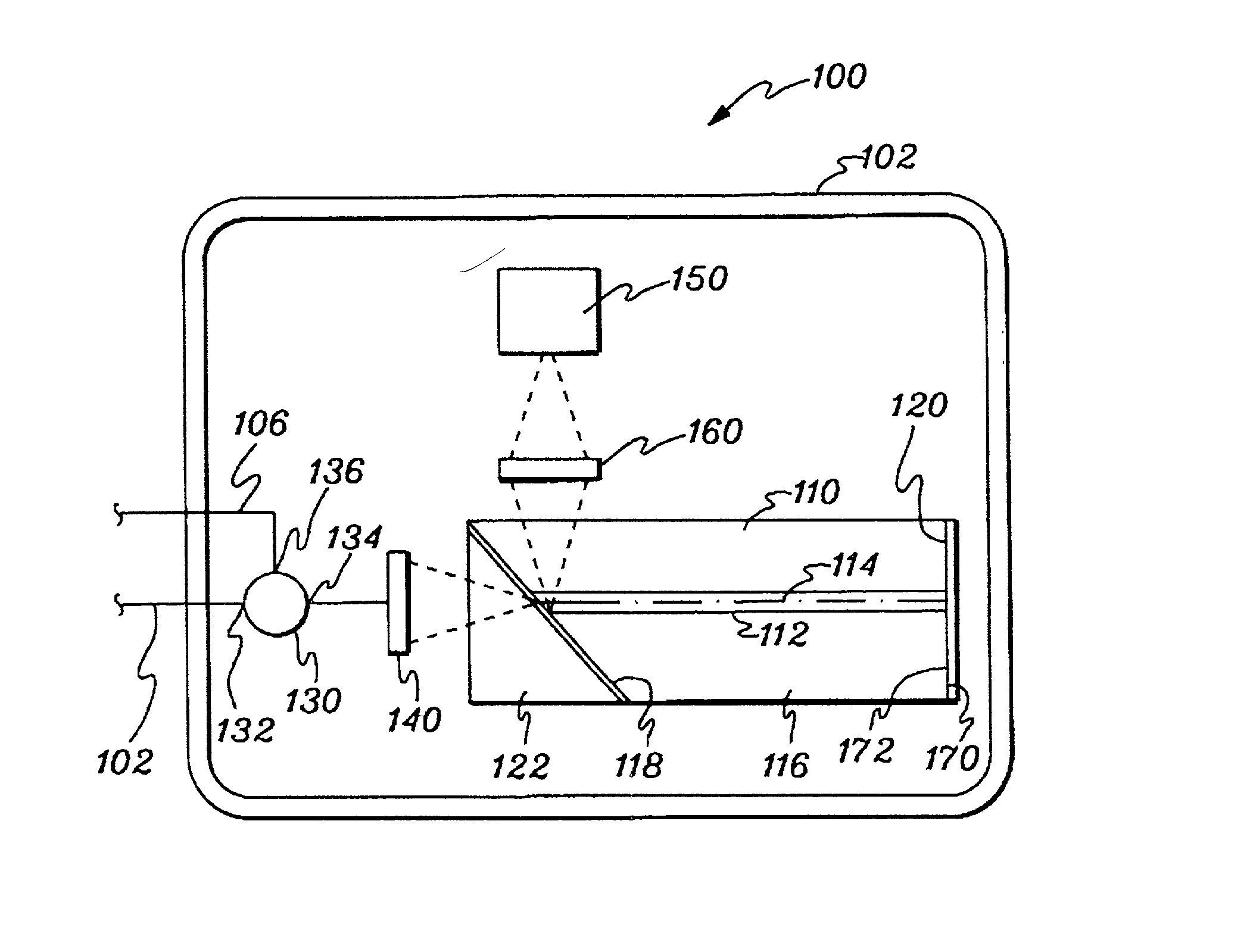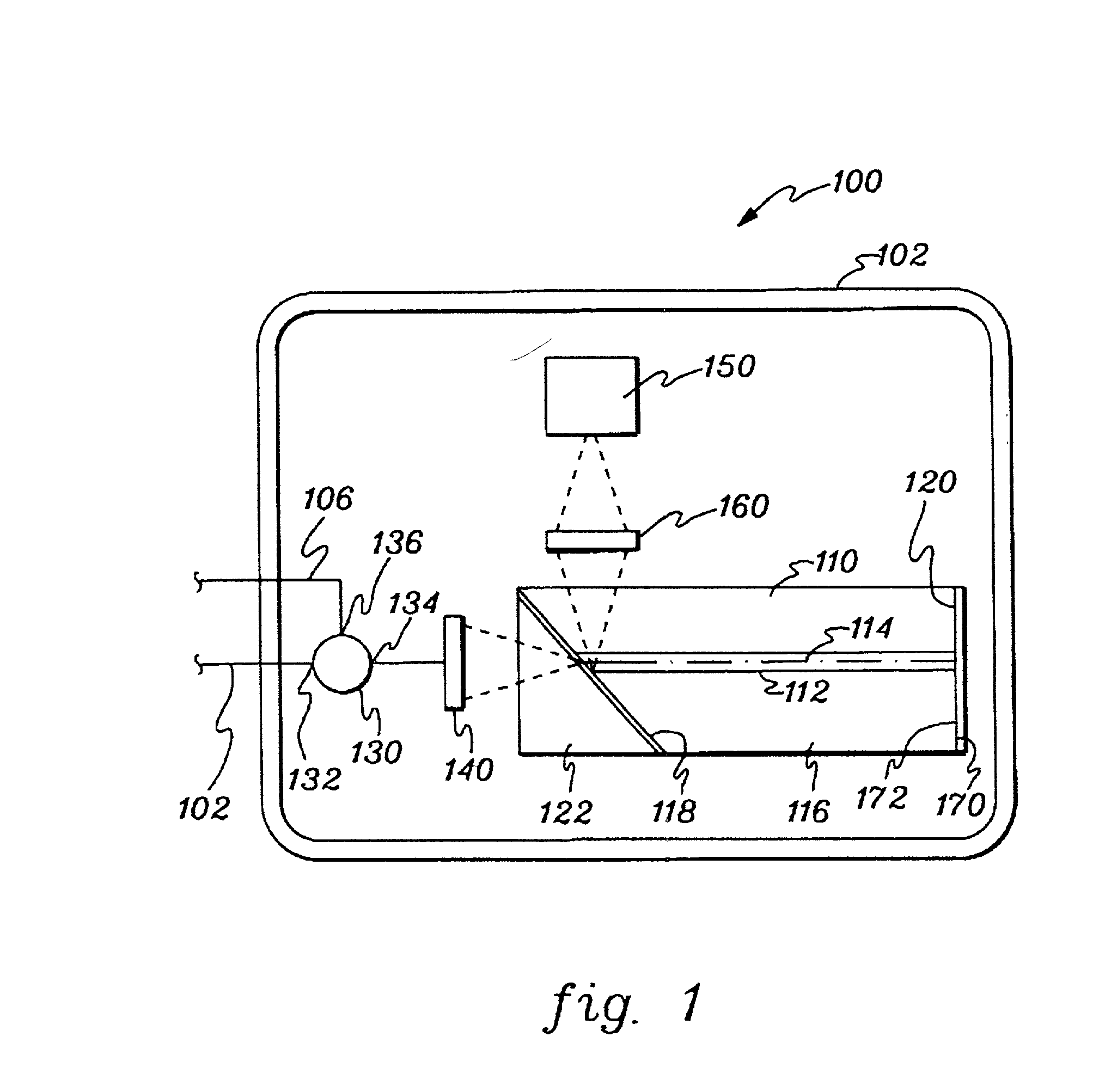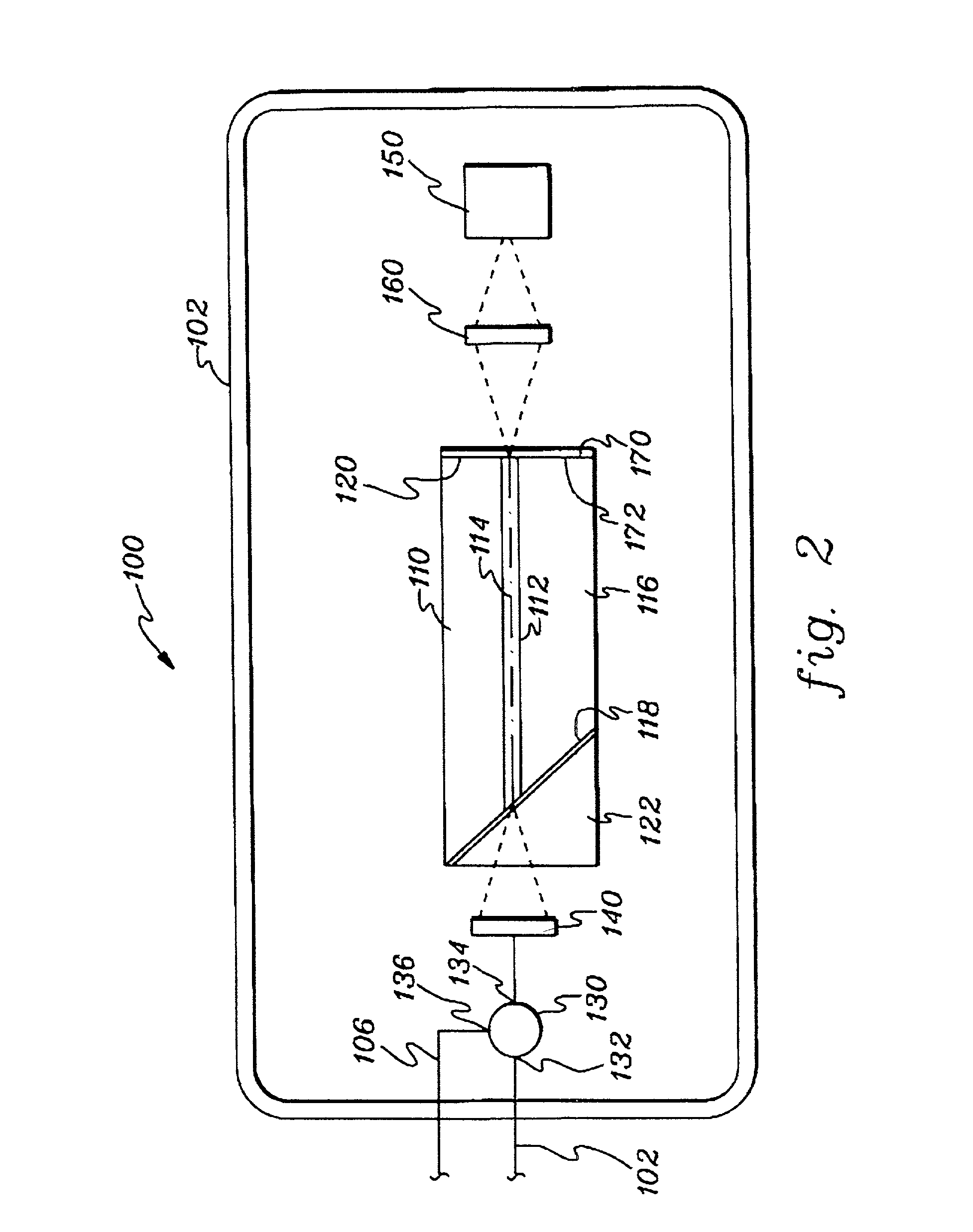Optical waveguide amplifier using a circulator and an optical signal reflective surface and method employing same
- Summary
- Abstract
- Description
- Claims
- Application Information
AI Technical Summary
Problems solved by technology
Method used
Image
Examples
Embodiment Construction
[0018] Generally stated, a novel waveguide amplifier employing a circulator and an optical signal reflecting surface is presented wherein stimulated emission is employed in a waveguide to amplify signals in a fiber-optic system. To summarize, the unique amplifier architecture allows for an optical signal to pass along the length of a waveguide a first time, reflect off an optical signal reflecting surface and then pass along the length of the waveguide a second time by using a circulator, splitter or other means positioned near an input end of the waveguide to receive the amplified signal exiting the input end of the waveguide. The optical amplifier made in accordance with the principles of the present invention results in a higher gain by subjecting the optical signal to twice the pump energy and twice the length of a waveguide at a lower cost without sacrificing other performance characteristics.
[0019] FIG. 1 depicts one embodiment of a waveguide amplifier 100 in accordance with t...
PUM
 Login to View More
Login to View More Abstract
Description
Claims
Application Information
 Login to View More
Login to View More - R&D
- Intellectual Property
- Life Sciences
- Materials
- Tech Scout
- Unparalleled Data Quality
- Higher Quality Content
- 60% Fewer Hallucinations
Browse by: Latest US Patents, China's latest patents, Technical Efficacy Thesaurus, Application Domain, Technology Topic, Popular Technical Reports.
© 2025 PatSnap. All rights reserved.Legal|Privacy policy|Modern Slavery Act Transparency Statement|Sitemap|About US| Contact US: help@patsnap.com



